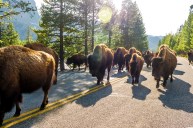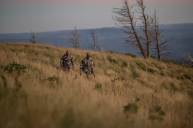Researchers from Virginia Tech found that the virus responsible for COVID-19 has been spreading among a wide group of wildlife. According to the study published this week in Nature Communications, they found the disease in six animals commonly seen in backyards. They include mice, opossums, raccoons, groundhogs, rabbits, and bats.
Joseph Hoyt, an assistant professor of biology and co-author, said there's a lot of research about COVID and white-tailed deer, but not as much on common backyard animals. "This study was really motivated by seeing a large, important gap in our knowledge about SARS-CoV-2 transmission in a broader wildlife community," Hoyt said.
Researchers collected hundreds of samples
For the study, the research team collected 798 nasal and oral swabs from wildlife as well as 126 blood samples from six species. With those samples, they found the virus in six out of 23 species of wildlife. While they only tested wildlife in Virginia, the findings could be consistent across North America.
"This study highlights the potentially large host range SARS-CoV-2 can have in nature and really how widespread it might be," Hoyt said, adding that researchers "urgently" need surveillance across a broader region to flesh out their theory.
How the disease spread between humans and wildlife
Yet, there's still a lot that researchers don't know about the disease. While they say that humans cannot contract COVID from wildlife, they don't really know exactly how it transmits from humans to wildlife.
Carla Finkielstein, a professor of biological sciences and a co-author of the study, described the virus jumping from humans to wildlife "like a hitchhiker switching rides to a new, more suitable host."
"The goal of the virus is to spread in order to survive. The virus aims to infect more humans, but vaccinations protect many humans. So the virus turns to animals, adapting and mutating to thrive in the new hosts," Finkielstein said.
Researchers say their findings suggest that wildlife in areas with high human activity have a greater chance of contracting the virus. In their testing, they found two mice from the same site infected with the same variant, meaning they either got it from the same human or one infected the other. What's more, they added that the findings suggest mutations in the virus could make developing vaccines more challenging.
Amanda Goldberg, a former postdoctoral associate and lead author of the study, summarized the findings, saying: "I think the big take home message is the virus is pretty ubiquitous."




